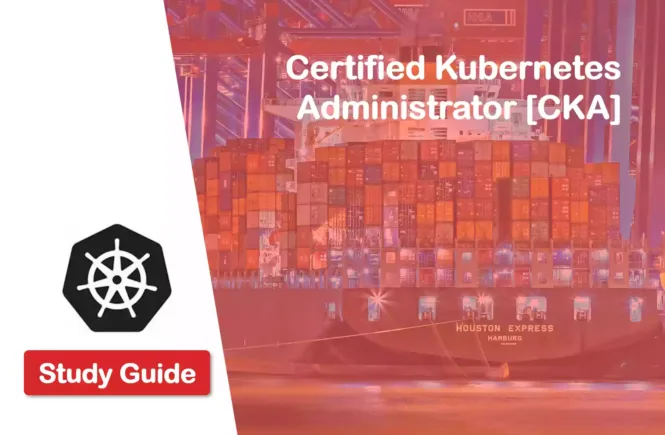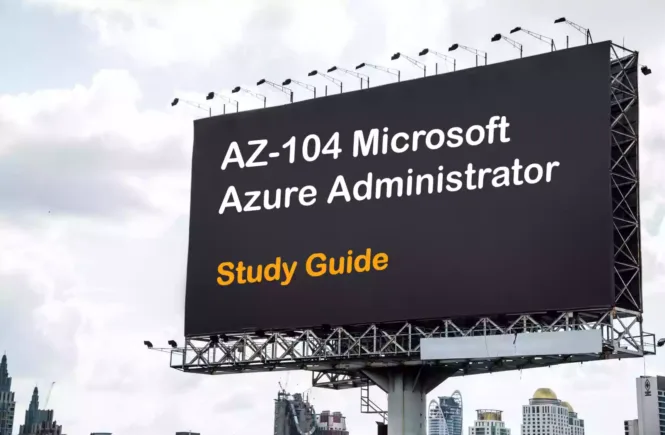How to Prepare for the CKA Exam?
Preparing for the CKA Certified Kubernetes Administrator exam? Don’t know where to start? This post is the CKA Kubernetes Administrator Certification Exam Preparation Study Guide (with links to each exam objective).
I have curated a list of articles from the Kubernetes documentation and other blogs on the web for each objective of the CKA Certification exam. Please share the post within your circles so it helps them to prepare for the exam.
CKA Kubernetes Administrator Exam Coupon
Coupon: Use Code SUMMER25
CKA Kubernetes Administrator Online Course
| LinkedIn Learning (Free trial) | Certified Kubernetes Administrator Cert Prep |
| Pluralsight | Kubernetes Admin, Certificate Learning Path |
| Whizlabs | Kubernetes Administrator Course |
| Udemy | Kubernetes Certification Preparation by Zeal |
CKA Kubernetes Admin. Practice Test/Guide
| Udemy Practice Tests | Kubernetes Administration Practice Test |
| Amazon e-book (PDF) | Hands-on Guide to Kubernetes exam |
CKA Kubernetes Administrator Other Materials
| Linux Foundation Bootcamp | Cloud Engineer Bootcamp [24 weeks] |
| Coursera | Fundamentals of Kubernetes Deployment |
Check out all the other DevOps/Kubernetes certificate study guides
Full Disclosure: Some of the links in this post are affiliate links. I receive a commission when you purchase through them.
Cluster Architecture, Installation & Configuration – 25%
Manage Role-based Access Control (RBAC)
Configure RBAC in your Kubernetes cluster
Other material related to Kubernetes RBAC:
Use Kubeadm to Install a Basic Cluster
Creating a cluster with kubeadm
Creating Highly Available clusters with kubeadm
Set up a bare-metal Kubernetes cluster with kubeadm
Installing Kubernetes with Kubeadm: A quick and dirty guide
Installing a cluster on Ubuntu
Manage a Highly-available Kubernetes Cluster
Options for Highly Available topology
Set up High-Availability Kubernetes Masters
Setup highly available Kubernetes cluster with Kubeadm
Creating Highly Available clusters with kubeadm
Other blog posts to refer
Provision Underlying Infrastructure to Deploy a Kubernetes Cluster
Deploy an AKS cluster using the Azure portal
Deploy a production-grade Kubernetes cluster on AWS
Cloud Infrastructure Provisioning – Google Cloud Platform
What is Kubernetes infrastructure?
Deploy Kubernetes on hosted cloud infrastructure
Perform a Version Upgrade on a Kubernetes Cluster Using Kubeadm
Kubernetes upgrade: The definitive guide to Do-It-Yourself
Upgrading clusters to newer Kubernetes versions
Upgrading self-hosted Kubernetes
Upgrading Kubernetes in Cloud providers
Implement etcd Backup and Restore
Backup & restore a Kubernetes master with Kubeadm
Other articles on etcd backup & restore
Amazon link (affiliate)
Workloads & Scheduling – 15%
Understand Deployments and How to Perform Rolling Update and Rollbacks
Kubernetes deployments: The ultimate guide
How do Kubernetes deployments work?
Kubernetes deployments: An introduction
What is a Kubernetes deployment?
Rolling update
Rollback deployments
Perform a Rollback on a DaemonSet
How do you roll back deployments in Kubernetes?
Rolling updates & Rollbacks using Kubernetes Deployments
Coupon: Use Code RAVIKIRANS15 for an additional 15% OFF
Use ConfigMaps and Secrets to Configure Applications
What are ConfigMaps in Kubernetes?
Ultimate Guide to ConfigMaps in Kubernetes
Kubernetes ConfigMaps and Secrets
An Introduction to Kubernetes Secrets and ConfigMaps
Create and use ConfigMaps in Kubernetes
Configuring applications
Know How to Scale Applications
Running multiple instances of your app
Interactive tutorial – scaling your app
Kubernetes autoscaling – 3 common methods explained
Scaling Kubernetes on application & infrastructure levels
Scaling Kubernetes: Kubernetes-based event-driven autoscaling
How to scale a deployment within a Kubernetes cluster
Understand the Primitives Used to Create Robust, Self-healing, Application Deployments
What are Kubernetes API primitives?
Kubernetes. Replication and self-healing
How to develop self-healing apps: 4 key patterns
True reliability requires self-healing nodes & managing infrastructure
Decoding the self-healing Kubernetes: Step-by-step
Reliable, Self-Healing Kubernetes Explained
Self-Healing Applications with Kubernetes and Spring Boot
Understand How Resource Limits Can Affect Pod Scheduling
Understanding Kubernetes limits and requests by example
Kubernetes best practices: Resource requests and limits
Kubernetes Resources Requests and Limits 101
How Pods with resource limits are run
Pod scheduling
Awareness of Manifest Management and Common Templating Tools
What is a Kubernetes Manifest?
The beginners guide to creating Kubernetes manifests
Kubernetes manifest task in Azure
Kubernetes templating tools
Services & Networking – 20%
Understand Host Networking Configuration on the Cluster Nodes
Cluster networking in Kubernetes
Starting a container with host networking enabled
A hacker’s guide to Kubernetes networking
A guide to the Kubernetes networking model
Kubernetes cluster networking 101
Kubernetes networking demystified
Kubernetes cluster networking components
Understand Connectivity between Pods
Introduction to Kubernetes pod networking
Understanding Kubernetes networking: pods
Review pod-to-pod communications in Kubernetes
Understand ClusterIP, NodePort, LoadBalancer Service Types and Endpoints
ClusterIP
NodePort
Understanding their differences
Know How to Use Ingress Controllers and Ingress Resources
Kubernetes ingress controllers
Ingress resources
Know How to Configure and Use CoreDNS
Understanding CoreDNS in Kubernetes
Using CoreDNS for service discovery
How to deploy CoreDNS in Kubernetes?
Configuring DNS servers for Kubernetes clusters
Create custom DNS entries with CoreDNS
CoreDNS on cloud platforms
Choose an Appropriate Container Network Interface Plugin
What is Container Network Interface (CNI)?
Introduction to CNI, the Container Network Interface
Container Networking Interface aka CNI
Understanding container network interface plugins
Container Networking Interface landscape
Choosing a Kubernetes CNI plugin
Storage – 10%
Understand Storage Classes, Persistent Volumes
Storage classes
Persistent Volumes
Understand Volume Mode, Access Modes and Reclaim Policies for Volumes
Access Modes
Reclaim policies for Volumes
Understand Persistent Volume Claims Primitive
What is PersistentVolumeClaim?
Introduction to PersistentVolumeClaims
Create a PersistentVolumeClaim
Provisioning a Persistent Volume Claim
Know How to Configure Applications with Persistent Storage
Understanding Kubernetes storage basics
Kubernetes Persistent Storage: Why, Where, and How?
How volumes and storage work in Kubernetes
Why is storage on Kubernetes so hard?
A complete storage guide for your Kubernetes storage problems
Get started provisioning storage in Kubernetes
Troubleshooting – 30%
Evaluate Cluster and Node Logging
A practical guide to Kubernetes logging
A complete guide to Kubernetes logging
Cluster-level logging with Kubernetes
Cluster-level logging in Kubernetes with Fluentd
Managing cluster logs with IBM Log Analysis
Collecting application logs on Kubernetes
Kubernetes logging through Logspout
Understand How to Monitor Applications
Introduction to Kubernetes monitoring
Tools for monitoring resources
Kubernetes monitoring best practices
A complete introduction to monitoring Kubernetes
9 top open-source tools for monitoring Kubernetes
Monitoring Kubernetes in production
Monitoring applications
Manage Container stdout & stderr Logs
Kubernetes – mount container stdout stderr logs
Collect log files inside the container
View logs for a container or service
Troubleshoot Application Failure
Application Introspection and Debugging
How-to Guide: Debug a Kubernetes application
GitHub: Troubleshooting Kubernetes apps
Learn how to troubleshoot applications running on Kubernetes
Simplified K8s troubleshooting with app-centric abstraction
Troubleshooting applications In Kubernetes
Troubleshoot Cluster Component Failure
Troubleshooting cluster issues
Troubleshoot Networking
Troubleshooting Kubernetes networking issues
How to troubleshoot Kubernetes network issues?
Troubleshooting Kubernetes networking on Windows
Kubernetes troubleshooting: Networking & DNS connectivity
Understand & troubleshoot the “Magic” of Kubernetes networking
Debugging Kubernetes networking
This brings us to the end of the Certified Kubernetes Administrator (CKA) Exam Preparation Study Guide.
What do you think? Let me know in the comments section if I have missed out on anything. Also, I love to hear from you about how your preparation is going on!
In case you are preparing for other DevOps / Kubernetes certification exams, check out the Kubernetes study guides for those exams.
Follow Me to Receive Updates on CKA Exam
Want to be notified as soon as I post? Subscribe to the RSS feed / leave your email address in the subscribe section. Share the article to your social networks with the below links so it can benefit others.





4 Comments
Hi Kiran,
Did you complete this CKA exam? How did you prepare? How and where you did practice? Where to get practice questions?
Hi Ravi
I am preparing for Docker and Kubernetes administration course. Will it help to shift my career path and also will it help to increase my yearly earnings?
Hello Rohit,
Certifications may / may not directly guarantee an increase in yearly earnings. They are a structured path to develop yourself in any tech.
You will earn well if you do well. And to do well, you need to be well-equipped. Certifications are a conduit to that.